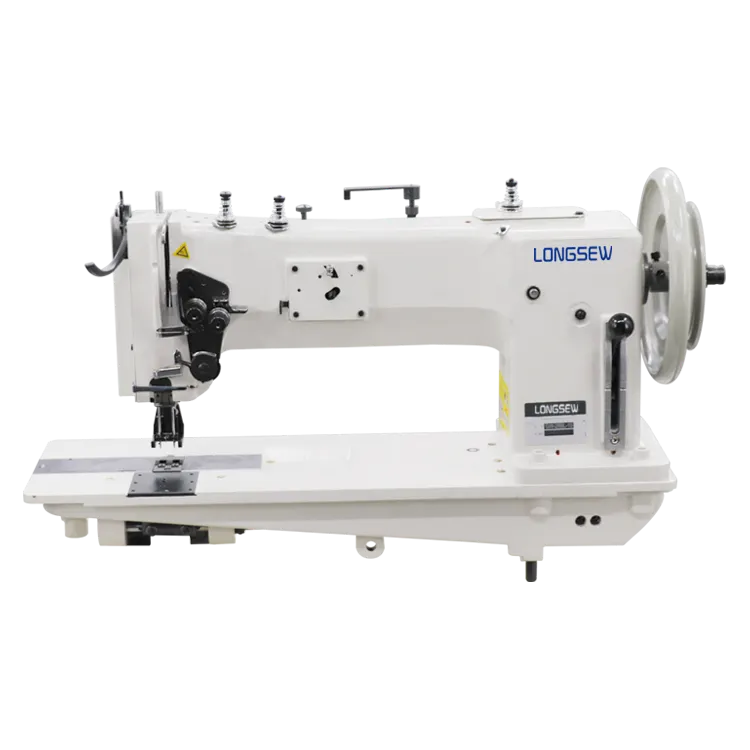Understanding the Key Differences Between Overlock and Coverstitch Machines
Understanding the Difference Between Overlock and Coverstitch Machines
Sewing enthusiasts often find themselves at a crossroads when deciding which sewing machine to purchase, especially when it comes to choosing between overlock and coverstitch machines. Both serve unique purposes in garment construction and finishing, making it essential to understand their differences to choose the right one for your sewing projects.
What is an Overlock Machine?
An overlock machine, often referred to as a serger, primarily serves the purpose of finishing edges to prevent fraying. It uses a combination of multiple threads, typically two to five, to create a stitch that locks the fabric edges together. This makes it ideal for knits and stretch fabrics, as it allows the fabric to stretch without breaking the seam. Overlock machines can also trim excess fabric while stitching, resulting in a clean, professional finish.
Overlock stitches are great for various techniques, such as creating rolled hems and seaming woven fabrics. Additionally, they can be used for bias binding and gathering, which increases their versatility. However, overlock machines do not create a straight stitch, limiting their use for basic sewing tasks such as hemming or piecing fabric together.
What is a Coverstitch Machine?
On the other hand, a coverstitch machine is specifically designed for hemming and finishing edges with a knit look. It typically features a two- or three-needle setup, allowing for the creation of parallel rows of stitching on the top and a chain-like stitch on the underside. This type of stitch is commonly found on the hems of t-shirts, athletic wear, and other knit garments since it provides a flexible, durable finish.
what is the difference between overlock and coverstitch

The coverstitch machine excels at achieving a neat, professional finish on hems without adding bulk. It can easily sew cuffs, necklines, and hems on stretchy fabrics, ensuring that the garment maintains its shape and fit after washing and wearing. However, coverstitch machines do not trim fabric or finish edges like overlock machines, which means they are often used in combination with an overlock machine to achieve the best results.
Key Differences Between Overlock and Coverstitch
1. Functionality The primary function of an overlock machine is to finish edges and prevent fraying, while the coverstitch machine is designed for hemming and providing a professional edge to knit fabrics. 2. Stitch Types Overlock machines create a variety of stitches to secure fabric edges, while coverstitch machines typically produce two parallel lines of stitching on the top and a chain stitch on the bottom.
3. Use Cases Overlock machines are versatile and can handle a range of sewing techniques, but they are not suitable for basic straight stitching. Coverstitch machines excel in hemming but may be limited when it comes to other sewing tasks.
4. Machine Design Overlock machines usually include a built-in cutting mechanism, while coverstitch machines do not have this feature.
Conclusion
Ultimately, the choice between an overlock machine and a coverstitch machine depends on your sewing needs and the types of projects you plan to undertake. Many sewists find that having both machines in their collection allows for greater versatility and the ability to create high-quality garments with professional finishes. Understanding the distinctive purposes of each machine can enhance your sewing experience and help bring your creative visions to life. Whether you're working with delicate knits or robust woven fabrics, being equipped with the right tools can make all the difference.
-
Industrial Cylinder Arm Sewing Machine: Revolutionizing Heavy-Duty SewingNewsJul.28,2025
-
Cylinder Arm Sewing Machine: Perfect for Special Sewing ApplicationsNewsJul.28,2025
-
Cylinder Bed Sewing Machine: Essential for Sewing Complex MaterialsNewsJul.28,2025
-
Heavy Duty Sewing Machine: The Essential Tool for Industrial ApplicationsNewsJul.28,2025
-
Computerized Pattern Sewing Machine: Revolutionizing Precision StitchingNewsJul.28,2025
-
Heavy Duty Industrial Sewing Machine: Power Meets PrecisionNewsJul.28,2025
-
Leather Sewing Machine: The Industrial Standard for Tough MaterialsNewsJul.18,2025





























